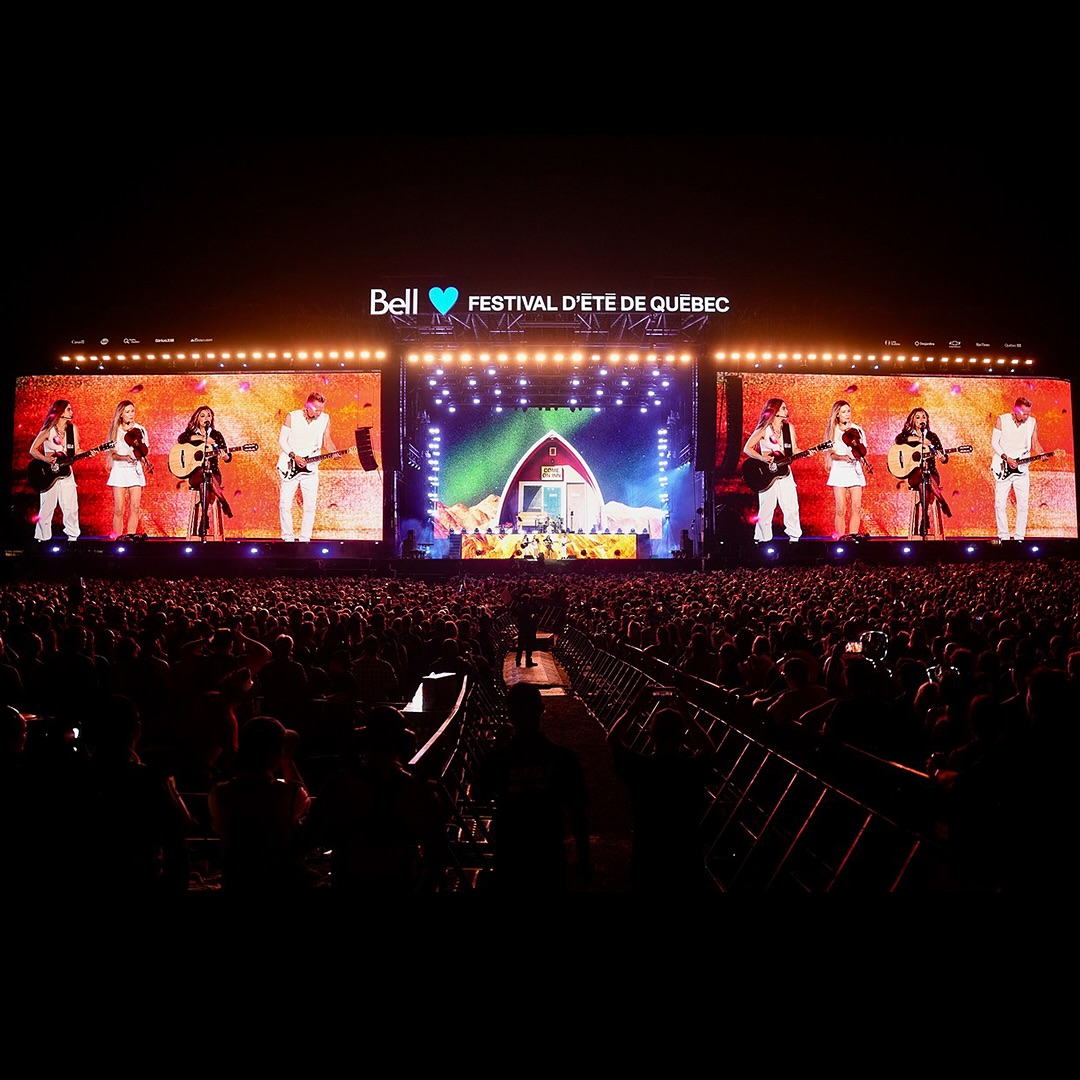André Petrus – Focused Light
Posted on September 2, 2025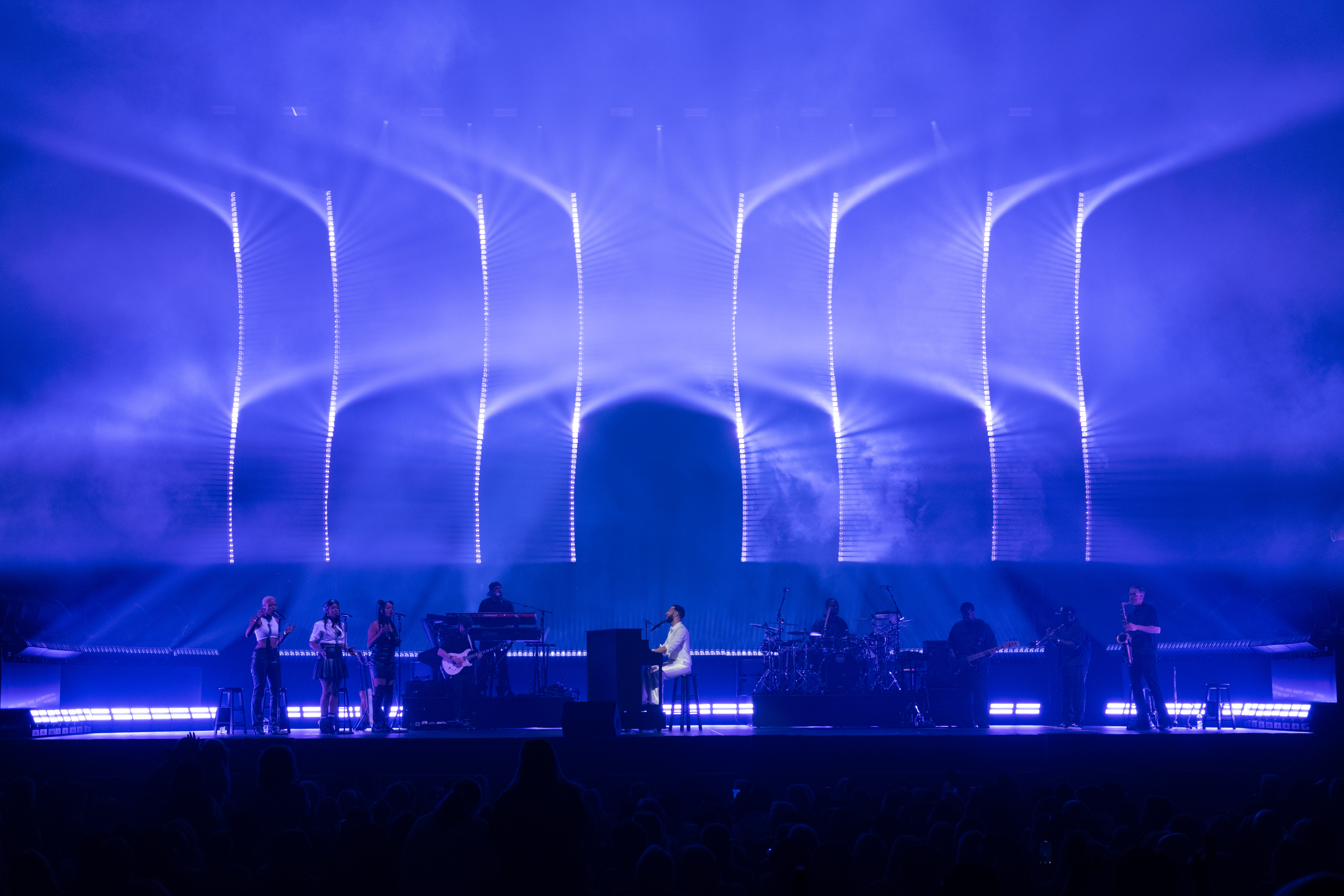
Anyone attending John Legend’s widely celebrated 20th anniversary tour earlier this year couldn’t help but be swept up in the chronological narrative of the iconic artist’s career. The star himself shared special moments with fans… flawlessly performed classic hits brought back memories… and the evocative imagery on stage conveyed a sense of time unfolding. The only thing “missing” were video images portraying different moments in Legend’s journey.
A retrospective tour without video? Yes! Although one might expect video images to play a prominent role in this kind of show, lighting and production designer André Petrus and his famous client believed that having the purest, most direct connection between light and music with no distractions was the best way to create a setting where Legend’s artistry could speak for itself.
 Focused intently on the core role of lighting, Petrus’s powerful work on the Legend tour speaks volumes about his approach to design. Although he has incorporated video into his shows on many occasions, the designer is intent on placing light and its relationship to music at the heart of his designs. In keeping with this philosophy, he tends to stay away from elaborate color combinations, preferring instead to build looks on monochromatic palettes accented by white light. The better, he believes, to drive home the emotional tenor of each song.
Focused intently on the core role of lighting, Petrus’s powerful work on the Legend tour speaks volumes about his approach to design. Although he has incorporated video into his shows on many occasions, the designer is intent on placing light and its relationship to music at the heart of his designs. In keeping with this philosophy, he tends to stay away from elaborate color combinations, preferring instead to build looks on monochromatic palettes accented by white light. The better, he believes, to drive home the emotional tenor of each song.
Petrus has been applying his design vision to a growing number of superstars of late, including (in addition to John Legend), J. Balvin, Kacey Musgrave, Shania Twain, Old Dominion, and Zach Bryan. Not many years earlier, he was busy working his craft as a much-in-demand and highly respected lighting programmer, for prominent designers like Sooner Routhier, Rob Sinclair, Mark Carver, and Butch Allen to name a few. Prior to that he worked as a lighting tech. His first time on the road was as the sixth man on the lighting crew for Taylor Swift’s 2009, Fearless Tour.
Every step along the way, Petrus did all he could to learn from the designers around him. This process actually started when, as a teenager, he would buy concert tickets as close as possible to FOH so he could talk to LDs. He learned his lessons well, as his rise in the industry so brilliantly demonstrates.
Speaking from his studio, Outrage Media Group, Petrus shared insights into the power of focused light.
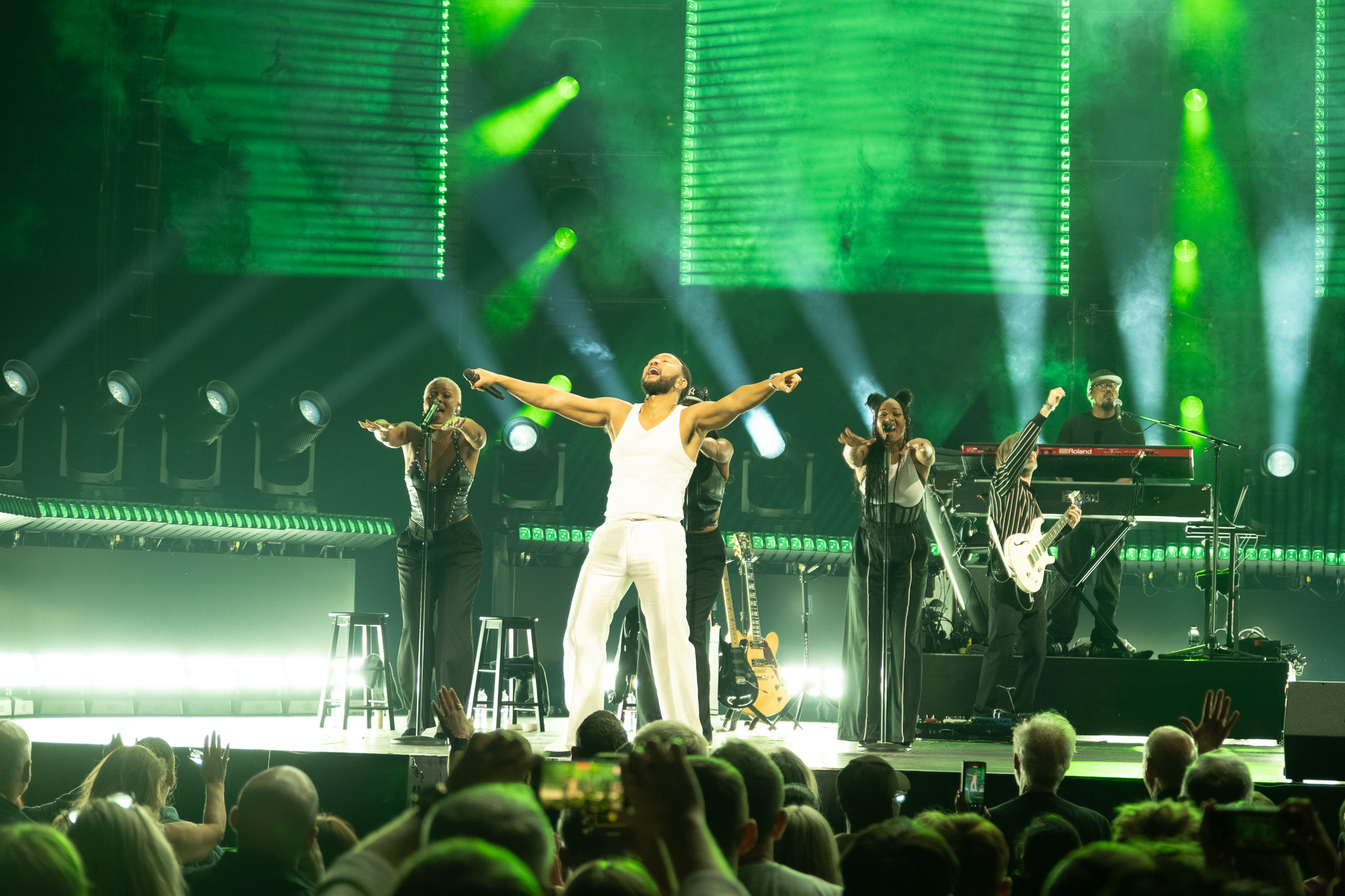
On your John Legend tour, you created bold impressive looks that conveyed a sense of time passages — and you achieve that without any video wall. How did you do this with no historical video footage?
“John wanted the show to feel like the early days. He wanted a club feel. So, we wanted it to be about the music and lights. We let the music speak for itself, and we were there to help carry that energy and emotion. This style of music is what I grew up with, so quite honestly, it came naturally to me.”
What are the challenges of creating a large scale arena production like that without video?
“Generally speaking, the biggest challenge is convincing the artist and management that it’s not necessary to have a video element. That wasn’t the case with the John Legend tour where everyone involved was behind that idea, but for many management teams, the default is often to want bigger screens just because everyone else is doing it. Sometimes, I wonder how shows have ended up with screens as the center piece, especially when they are playing generic screen savers on them. It’s easy to put big screens in a show, but you also need quite the budget, as well as the right creative concept, if you want what you display on those screens to work.”
One recent tour, where you did use video was J Balvin’s Back To The Rayo 2025. Your video walls there were very dramatic, and given their distinctive shapes they changed the geometry on stage. Can you tell us a bit about the role geometric patterns play in your approach to design?
“High Scream along with The Squared Division did a great job production designing J Balvin’s Back to The Rayo 2025 show. That show had a “Back To The Future Vibe” so futuristic and modern approach was the theme. In the case of lighting big bold looks are the way to go. When I used a fixture type in the show, I tend to go with ALL of those fixtures at once. That carries the geometric patterns and shapes into the lighting looks. It helps compliment the stage design and photographs very well. At any point if you take a picture, it should look big, bold or simple. Nothing in between.”
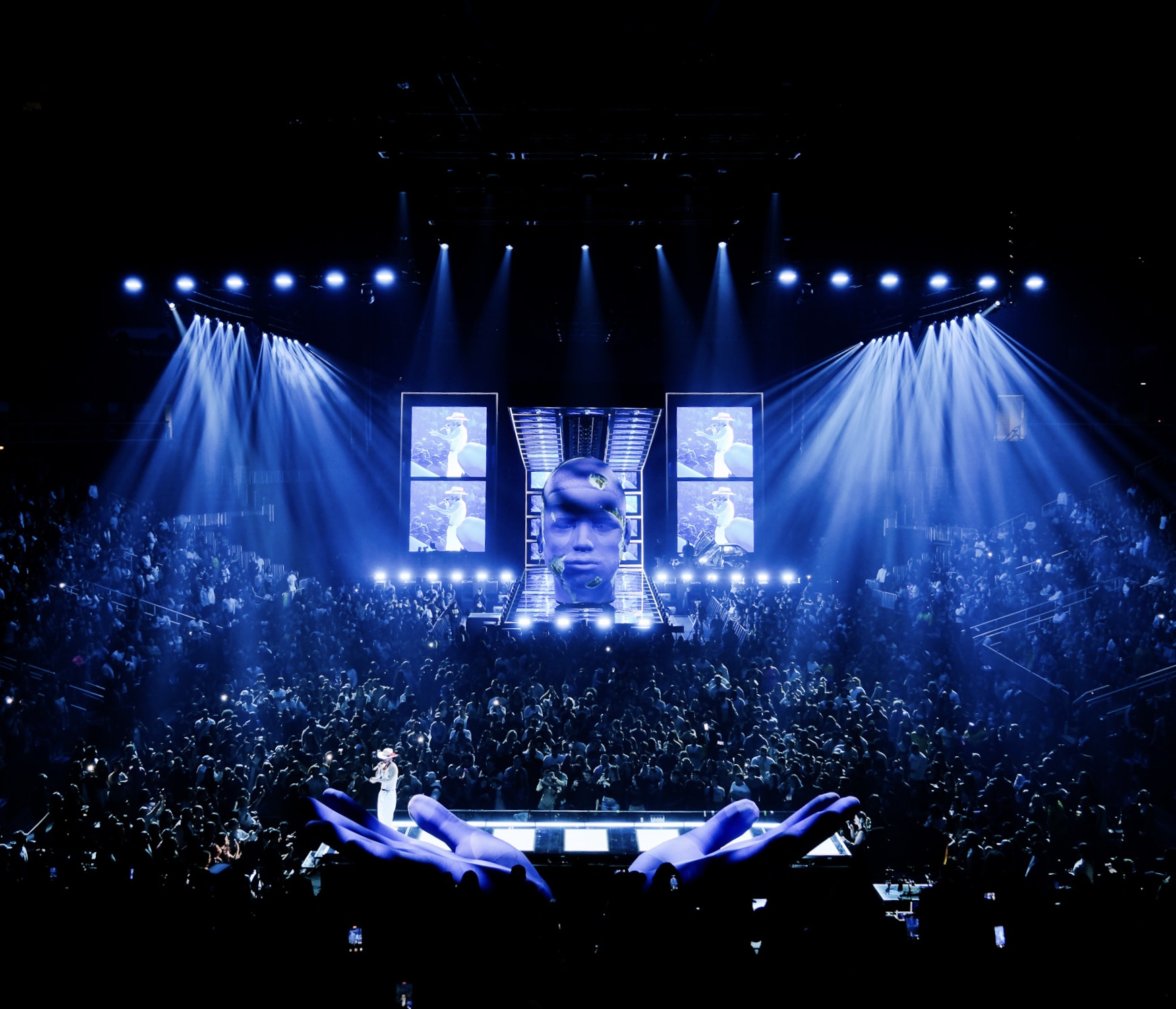
You also created some distorted imagery with your video on that tour, altering the shape of the artist. What was your vision there? What effect did you want to achieve?
“That is all The Squared Division. They have the ideas and concepts for notch and video treatments and I am there to make sure the artist is lit correctly so we get the most out of our Notch looks.”
Back to the John Legend tour, you used quite a few dramatic monochromatic color schemes. Can you give us an overview of how you use different colors to convey different moods?
“Using Monochromatic colors is my style. I steer away from color combos and generally stick to white light as being an accent color. There are always exceptions when the music or creative calls for it. As far as picking what color it really comes down to the mood of the song. It’s about feeling and what color speaks to me. I’m also very aware of the setlist and order to try and keep things fresh from song to song.”
Do you have a favorite color to work with?
“My favorite color to work with is White. It’s all the colors at once and it’s hard to make something look bad in white.”
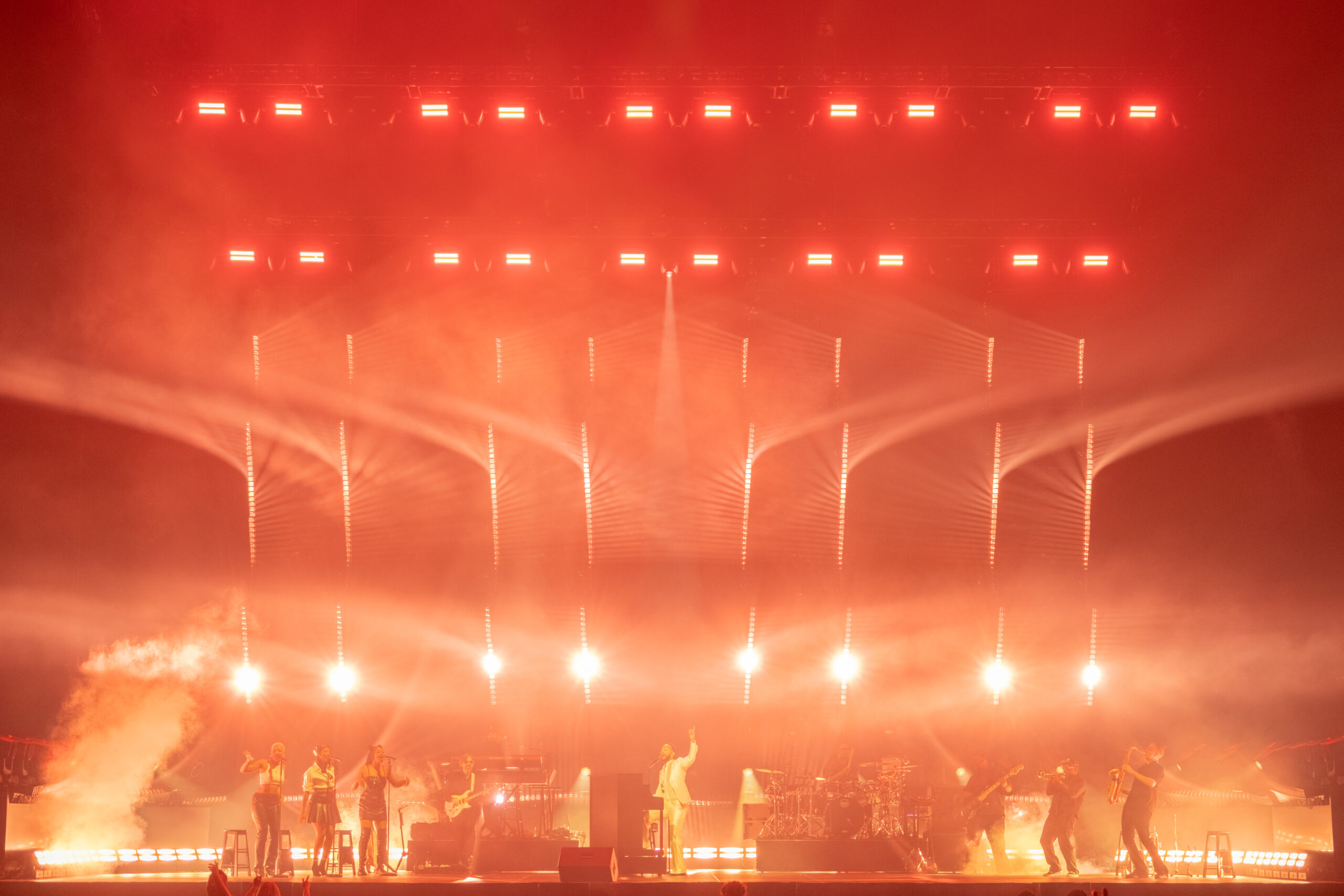
Is there a color that you usually try to stay away from?
“All colors are fair game. If the mood calls for it let’s give it a try.”
When speaking of the John Legend tour you talked about how important he was to you as an artist when you were growing up. Do you have to like an artist to do a good job lighting that performer’s show?
“I can light any artist whether I like the music or not. Of course it helps if I do like it, but at the end of the day I light all my artists equally and do what the music is calling for. Most music I tend to listen to on my own time would probably never play the size shows I actually get hired to light. There are a handful of exceptions though, Kacey Musgraves and John Legend to name a few.”
You mentioned Kacey Musgrave, like many, we were very impressed by your work for her, particularly when you lit the first show ever at The Pinnacle in Nashville. What was that experience like?
“I love working with Kacey because it’s a collaborative effort. It’s great working directly with an artist that tells you what they like and what they don’t like but also listens and takes your professional opinion. As far as the Pinnacle show goes it was great. Not often do I get to light a club show. That venue is great because it’s the perfect size venue to really feel connected with the show. It’s also the perfect size stage and trim height to still get a good amount of production value. “
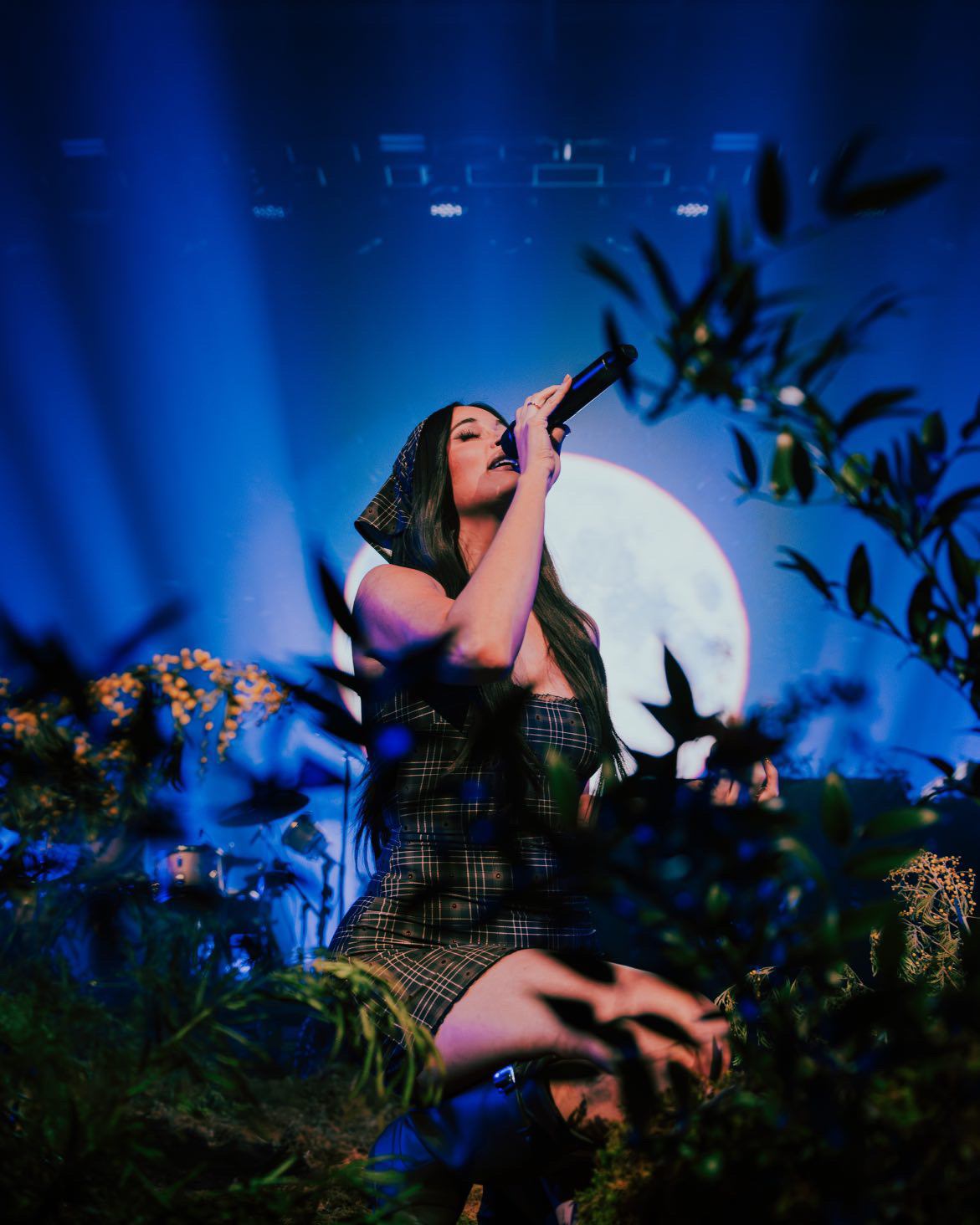
You also lit NewJeans Bunnie Camp at the Tokyo Dome recently. This was your first experience lighting K-Pop. What was it like? How was it different from lighting shows like John Legend or Kasey Musgraves?
“That was a full on pop show. So the bigger the better. All the light on all the time. The idea is to make the girls look bigger than life and that’s exactly what we did. For me it was less art and more show.”
You have been designing quite a few big tours lately. Not long ago you were primarily programming. Can you tell us a bit about how, when and why you made the switch to design. What were the big challenges in making this switch?
“I still program most of my shows. For a lot of my clients, I can still manage both. I’ve always been a designer at heart but often times it’s hard to get those ideas through without being hands on. When I was ‘just a programmer,’ generally the lighting designer or production designer would give me a creative brief and let me do a pass at lighting the song. They would then give their blessing and we move on. I’ve always looked at my job as an associate as opposed to just a button pusher. In the early days I definitely was a human calculator but quickly advanced past that.
“The only real challenges is time management. Trying not to take on more than I can handle. Programming a show takes time and focus. Trying to answer emails and update drawings while programming can definitely be a challenge but with good time management and not taking on too much it can be achieved. Having a studio at my house has also been a game changer. It opens the door up to help manage that time.”
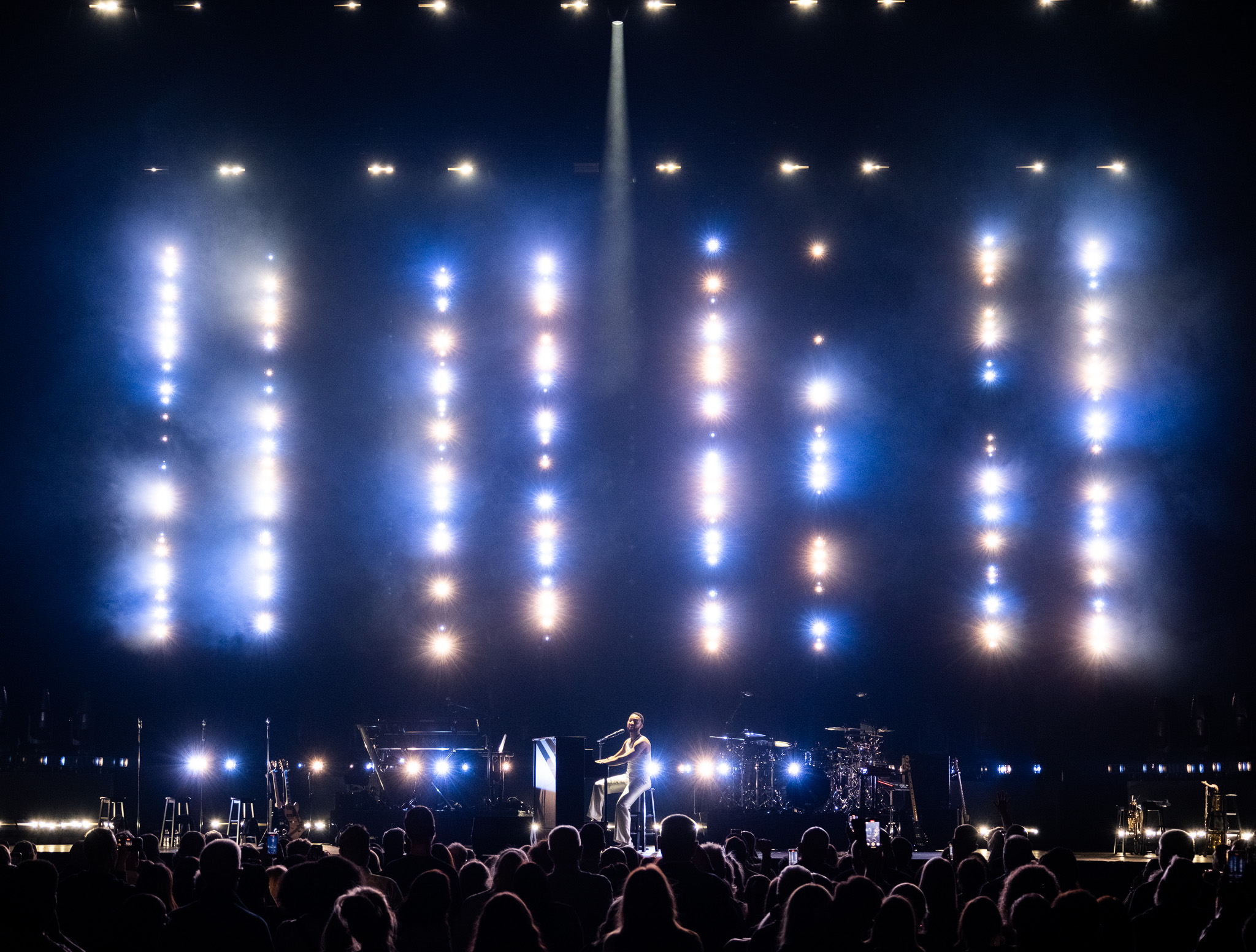
How did sharpening your skills as a programmer help you as a lighting and production designer?
“I think it’s the other way around, really. I think knowing how to light people and a stage translates to being a good programmer. Learning from people like Mark Carver, Rob Sinclair, Sooner Routhier, Jesse Blevins and Eric Marchwinski have helped shape who I am today.”
Do you approach a new project differently as a designer than you did as a programmer?
“I would say not really. At the end of the day it’s still a business. I am not part of a larger company and I also am not represented by anyone so every project I am learning. Whether it’s time management or proof reading contracts, invoicing or logistics there is always something to learn.”
How do you get inspired at the start of a project? Do you ever procrastinate?
“The best way to get inspired is with a creative brief from management. Knowing a little about the artist and the overall vision is key. Blind pitching a design can be tiresome and a waste of time. Having some information to work from is crucial. All I want to do is give the artist what they want and help them achieve the overall vision for the brand.”
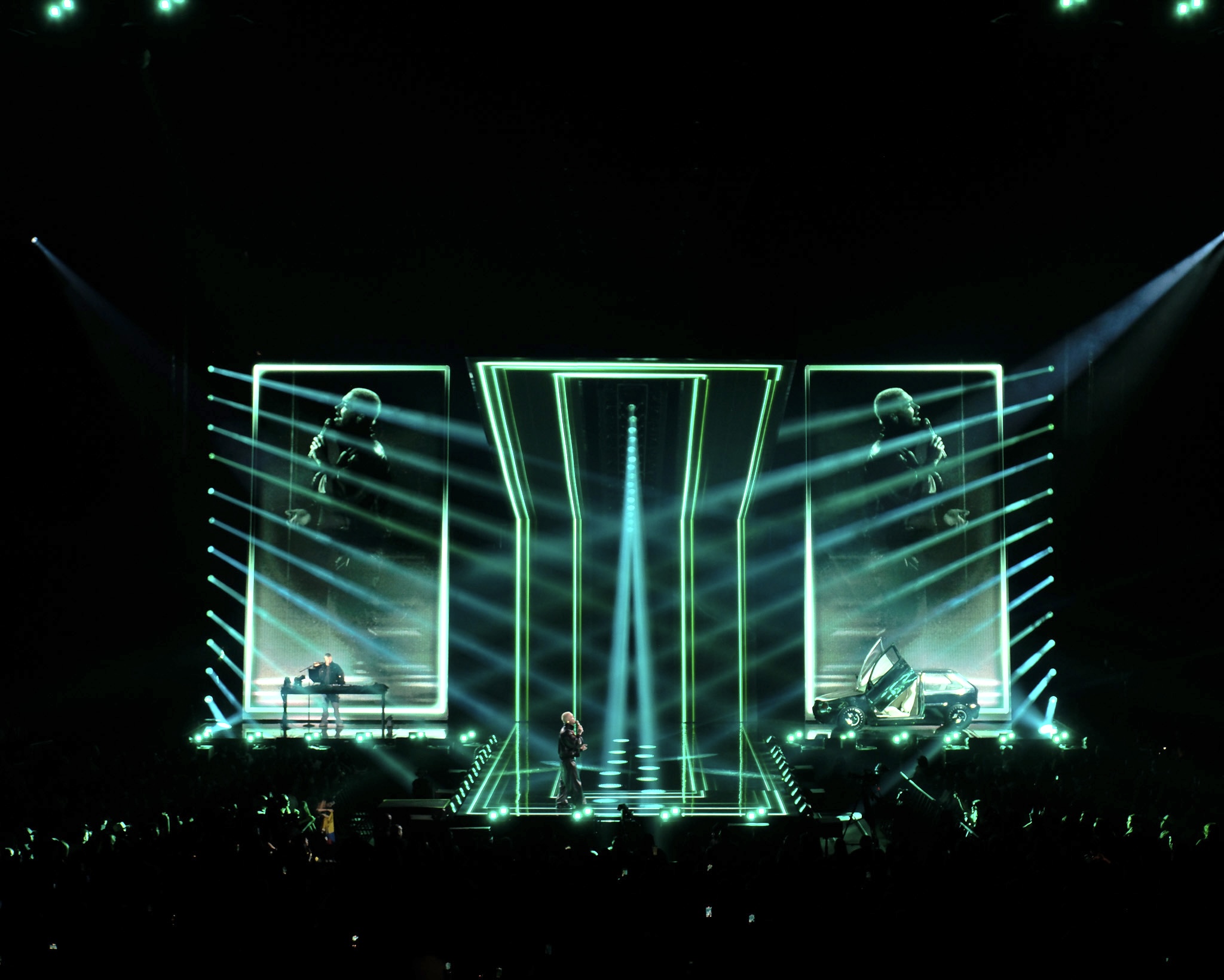
How and why did you get started in lighting design?
“I’ve been fascinated with lighting since I was 15 so for over 20 years this is all I have ever done. It’s what I know and what still drives me today.”
Who were the big influences in your career?
“Mark Carver, Jonathan Smeeton, Scott Holthaus, Jesse Blevins, Sooner Routhier, George Jackson, Mark Butts, and Rob Sinclair just to name a few.”
What is the one thing you want people to know about you as a designer?
“I’m here for the overall vision. It’s really about the music. I want the lighting to be an extension of the music. Musicality with dramatic looks is what I am about. I am about the music and the vibe. Also, I hope people think of me as someone who treats everyone with mutual respect. Being kind really isn’t that hard.”
